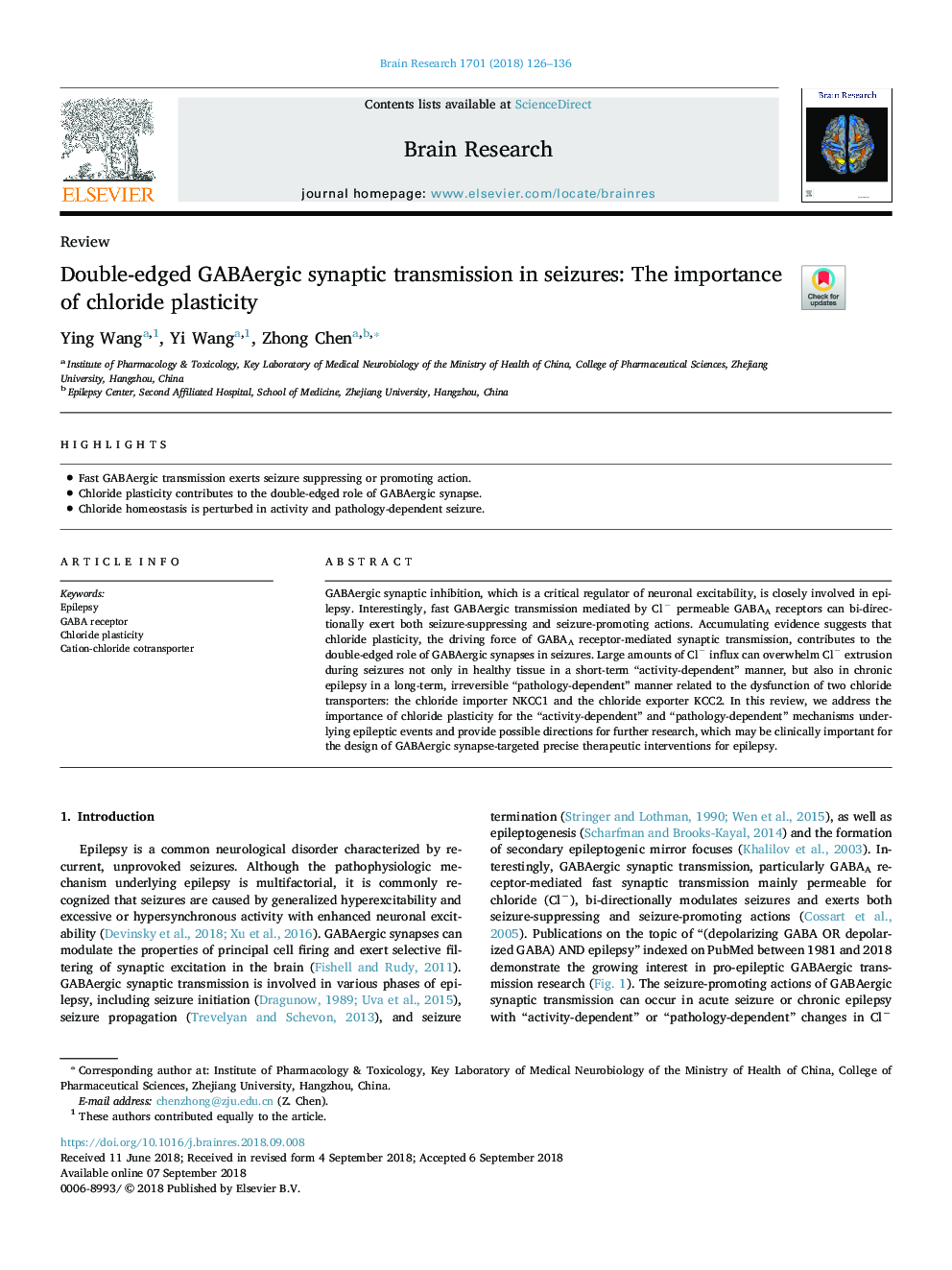| Article ID | Journal | Published Year | Pages | File Type |
|---|---|---|---|---|
| 9422672 | Brain Research | 2018 | 11 Pages |
Abstract
GABAergic synaptic inhibition, which is a critical regulator of neuronal excitability, is closely involved in epilepsy. Interestingly, fast GABAergic transmission mediated by Clâ permeable GABAA receptors can bi-directionally exert both seizure-suppressing and seizure-promoting actions. Accumulating evidence suggests that chloride plasticity, the driving force of GABAA receptor-mediated synaptic transmission, contributes to the double-edged role of GABAergic synapses in seizures. Large amounts of Clâ influx can overwhelm Clâ extrusion during seizures not only in healthy tissue in a short-term “activity-dependent” manner, but also in chronic epilepsy in a long-term, irreversible “pathology-dependent” manner related to the dysfunction of two chloride transporters: the chloride importer NKCC1 and the chloride exporter KCC2. In this review, we address the importance of chloride plasticity for the “activity-dependent” and “pathology-dependent” mechanisms underlying epileptic events and provide possible directions for further research, which may be clinically important for the design of GABAergic synapse-targeted precise therapeutic interventions for epilepsy.
Related Topics
Life Sciences
Neuroscience
Neuroscience (General)
Authors
Ying Wang, Yi Wang, Zhong Chen,
